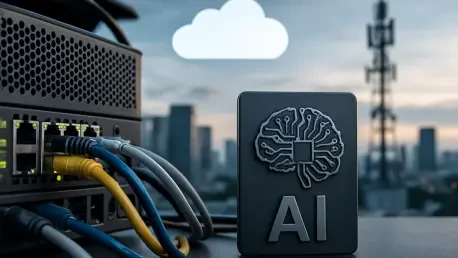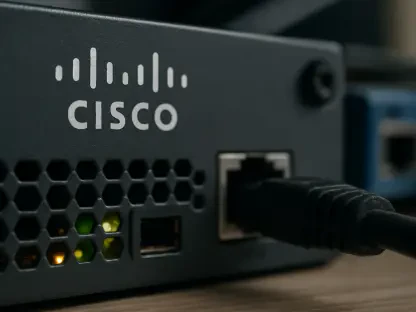Imagine a world where smart devices, from self-driving cars navigating chaotic city streets to wearable health monitors detecting critical issues in real-time, make split-second decisions without ever connecting to a distant cloud server. This isn’t a distant dream but a tangible reality being forged by Edge AI, a transformative technology that shifts artificial intelligence processing from centralized data centers to the very devices at the network’s edge. Unlike traditional cloud-based systems that rely on constant data transmission, Edge AI empowers smartphones, sensors, and autonomous vehicles to analyze and act on information locally, slashing delays, enhancing privacy, and reducing bandwidth demands. This paradigm shift is not just a technical upgrade; it’s a fundamental reimagining of how technology integrates into daily life. Paired with the principles of decentralized computing, where AI tasks are distributed across multiple devices, Edge AI is laying the groundwork for a future of smarter, more autonomous systems. This article delves into the mechanics of this revolution, exploring the technology driving it, the industries it’s transforming, and the broader societal impacts. By unpacking these layers, the profound influence of decentralized intelligence on modern tech landscapes becomes clear, highlighting why this shift matters now more than ever.
Unpacking the Power of Decentralization
Edge AI thrives on the principle of decentralization, a concept that fundamentally changes how data is handled by processing it directly at the source rather than relying on far-off cloud servers. This approach is crucial for applications requiring instantaneous responses, such as autonomous vehicles that must react to sudden obstacles in mere milliseconds. By eliminating the need to send data back and forth to centralized systems, latency is drastically reduced, enabling real-time decision-making that can be the difference between safety and disaster. Furthermore, this localized processing aligns with growing demands for efficiency, as it minimizes the strain on network infrastructure, cutting down on operational costs for both businesses and end-users. The significance of this cannot be overstated, as it allows technology to keep pace with the speed of modern life, ensuring seamless interactions in critical scenarios.
Beyond speed, decentralization addresses one of the most pressing concerns in today’s digital age: privacy. When sensitive data, such as personal health metrics or financial information, is processed on-device, the risk of interception during transmission to the cloud diminishes significantly. This is particularly vital in sectors like healthcare, where confidentiality is paramount, and breaches can have severe consequences. Additionally, reducing data movement across networks eases bandwidth congestion, a growing issue as billions of connected devices flood global systems. The result is a more robust and secure framework that not only protects users but also streamlines operations. As Edge AI continues to evolve, its decentralized nature promises to redefine trust in technology, making it a cornerstone of future innovations.
Hardware Innovations Fueling the Edge
The rise of Edge AI is inextricably linked to remarkable advancements in hardware tailored for on-device intelligence. Specialized components like Neural Processing Units (NPUs), high-efficiency GPUs, and custom Application-Specific Integrated Circuits (ASICs) are at the forefront, designed to deliver powerful AI computation with minimal energy consumption. These chips are engineered to fit into compact devices without sacrificing performance, enabling everything from smartphones to industrial sensors to run complex algorithms locally. Unlike traditional cloud infrastructure, which demands significant power and space, edge hardware prioritizes efficiency and portability, making it possible to embed AI into everyday tools. This technological leap is breaking barriers, allowing decentralized systems to flourish in environments where constant cloud connectivity is impractical or impossible.
Major industry players, including Google with its Edge TPU, NVIDIA with the Jetson series, and Qualcomm with Snapdragon platforms, are driving this hardware revolution by creating solutions that balance power and practicality. These innovations are shrinking the divide between high-end AI capabilities and the constraints of small, battery-powered devices, ensuring that even the most resource-limited gadgets can perform sophisticated tasks like image recognition or predictive analysis. The impact is profound, as it democratizes access to advanced technology, allowing smaller companies and developers to integrate Edge AI without the need for massive infrastructure investments. As hardware continues to advance, the potential for widespread adoption of decentralized tech grows, setting the stage for a future where intelligence is embedded everywhere.
The Synergy of Distributed Computing
Edge AI often collaborates with distributed computing to amplify its reach and effectiveness, creating a powerful framework for decentralized technology. One standout method in this space is Federated Learning, a technique that enables multiple devices to collaboratively train AI models without exchanging raw data. Instead, only model updates are shared, preserving user privacy while still improving accuracy across a network. This approach is particularly valuable in scenarios where data sensitivity is a concern, such as in financial services or personal health monitoring, as it ensures that individual information remains secure on local devices. By harnessing the collective power of many endpoints, distributed systems enhance the robustness of AI, making it adaptable to diverse and dynamic environments.
This partnership also excels in scaling AI capabilities for large, interconnected systems like smart cities or industrial IoT networks. By spreading computational workloads across numerous nodes, distributed computing prevents bottlenecks that often plague centralized setups, ensuring smoother and more efficient operations. For instance, traffic management systems can analyze data from countless sensors in real-time, optimizing flow without overwhelming a single server. This scalability is a game-changer for industries aiming to manage vast amounts of data with precision and speed. However, the complexity of coordinating such networks poses challenges, requiring sophisticated orchestration tools to maintain consistency and performance. As Edge AI and distributed computing continue to converge, they are crafting a resilient backbone for the next generation of autonomous, intelligent systems.
Industry Transformations Driven by Edge AI
Edge AI is sparking a seismic shift across multiple industries, redefining how operations are conducted with its promise of immediate, localized intelligence. In healthcare, wearable devices equipped with Edge AI can monitor vital signs and detect anomalies like irregular heartbeats, alerting medical professionals instantly without the delay of cloud processing. This capability is revolutionizing patient care by enabling proactive interventions, especially in remote or underserved areas where connectivity may be unreliable. Similarly, in manufacturing, sensors on factory floors analyze data in real-time to predict equipment failures or optimize production lines, reducing downtime and boosting efficiency. These applications illustrate how Edge AI is moving critical decision-making closer to the action, transforming industries by prioritizing speed and precision over traditional, slower systems.
The competitive landscape is also evolving as tech giants and nimble startups race to capitalize on Edge AI’s potential. Companies like Microsoft and Amazon are extending their cloud services to integrate edge solutions, ensuring they remain relevant as reliance on centralized infrastructure diminishes. Meanwhile, chipmakers such as NVIDIA and Intel are seeing soaring demand for specialized processors, positioning them as key players in this shift. Startups, too, are carving out spaces with innovative platforms tailored for niche applications, challenging established norms. This dynamic environment is pushing innovation at an unprecedented pace, as businesses rethink strategies to embed decentralized tech into their core offerings. The ripple effects are reshaping supply chains, customer experiences, and even business models, marking Edge AI as a catalyst for widespread industry reinvention.
Societal Impacts and Emerging Challenges
The societal benefits of Edge AI are substantial, offering a path toward more secure and sustainable technology. By processing data locally, this technology significantly reduces the risk of breaches during transmission, a critical advantage in an era of escalating cyber threats. For instance, personal information handled by smart home devices or health trackers stays on the device, minimizing exposure to potential hackers. Moreover, Edge AI contributes to sustainability by cutting the energy consumption associated with massive data centers. Localized computation requires far less power than constant cloud communication, aligning with global efforts to reduce tech’s carbon footprint. These advantages position Edge AI as a tool for building trust in digital systems while addressing environmental concerns, a dual benefit that resonates across communities.
However, the road to widespread adoption is not without hurdles, as Edge AI introduces unique challenges that must be navigated carefully. Many edge devices operate with limited processing power and memory, struggling to handle the most complex AI tasks without frequent optimization. Managing distributed networks also presents logistical difficulties, as coordinating thousands or even millions of endpoints across diverse locations demands advanced tools and expertise. Security remains a pressing concern, as the proliferation of connected devices expands the potential attack surface for malicious actors. Robust safeguards and innovative encryption methods are essential to protect these decentralized systems. Addressing these obstacles will be crucial for Edge AI to fulfill its promise, ensuring that its benefits are realized without compromising safety or efficiency in an increasingly connected world.
Looking Ahead: The Future of Decentralized Intelligence
The trajectory of Edge AI points to a future brimming with potential, as ongoing advancements promise to deepen its integration into decentralized tech. In the coming years, expect to see even more powerful AI accelerators and neuromorphic chips making their way into consumer devices, mimicking brain-like efficiency for unparalleled energy savings. The rollout of 5G networks will further enhance connectivity, enabling seamless communication between edge devices and distributed systems, even in high-density environments. Long-term visions include optical computing for faster performance and multi-agent AI systems capable of autonomous collaboration across global networks. These developments suggest a world where billions of devices operate as a cohesive, intelligent ecosystem, fundamentally altering how technology interacts with human needs.
Yet, as this future unfolds, significant challenges must be addressed to ensure scalability and security. Interoperability among fragmented ecosystems remains a barrier, as diverse hardware and software standards can hinder seamless integration. Ensuring consistent performance across varied devices and regions will require innovative solutions and industry-wide cooperation. Additionally, safeguarding decentralized networks against emerging threats will be paramount, potentially leveraging technologies like blockchain for enhanced security. Projections indicate that by 2029, a significant portion of enterprise data could be processed outside traditional data centers, signaling a massive shift. Navigating these hurdles while capitalizing on Edge AI’s potential will shape the next chapter of decentralized tech, promising a landscape where intelligence is truly ubiquitous and autonomous.









